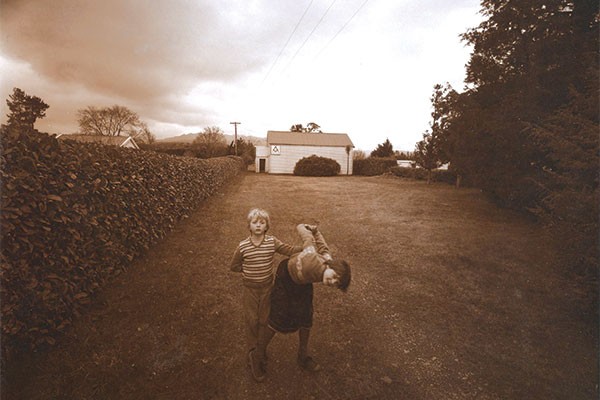New Zealand soils are notoriously low in selenium, a mineral that photographer Laurence Aberhart uses (with gold) as a toner when developing his photographs, to create warmth in the shadows. Viewing his photographs in the flesh, one has a sense that these flickers of captured light have been made by hand. In an increasingly digitalised world, such objects assume a type of gravity and reverence approaching the fetishistic. The return of vinyl, slow-food, handcrafted books, beards, fermenting and darkroom photography are the nostalgic wing of our great leaping forward. However maintaining a supply of traditional analogue material is difficult: the paper Aberhart uses is becoming harder and harder to find.
Gallerist Brett McDowell recounts stories of Aberhart and other diehard analogue photographers following wisp-lead-rumours of a special batch of paper made in Russia. The seekers pool their pennies and buy it up before it disappears as fleetingly as it appeared. Photographers like Aberhart, who began taking pictures long before digital photography was a pixel, continue to create into the last breath of the technology eclipse.
One of Aberhart’s iconic works is of the maunga Taranaki. Titled Taranaki (Afterglow into Night) it was shot over a period of hours during the night. Star threads arc across the night sky above a rustle of cloud near the peak. Apart from the slow-play trajectory of stars, all is still. Stillness is a feature of Aberhart’s work. The air is still around the monuments and memorials he is known for. The stone soldiers slice through the air in their vertical poses, holding memories. The halls are empty of people; places of congregation are vacant. He gives us traces of humanity. The memorials and monuments stand in for bodies that were never returned from European wars, cemeteries are full of bones but bereft of mourners.
Between nine neatly hung photographs that begin with a mountain and end with a memorial, there is a photograph that is striking for the presence of people: Kamala and Charlotte, two of the artist’s children. There are no star threads, no compression of deep time, just two entangled children caught in a moment of play and framed by a snaking hedge that leads to a Freemason Lodge. I had seen this work before and had a similar feeling of recognition in response to many of the other photographs. It was only after I left that I realised Aberhart’s work was familiar not only as a photograph, but through the framing and focus of my eyes that have accumulated a record of cemeteries, monuments, and particularly war memorials, found all over Aotearoa/New Zealand. But lest we forget, Aberhart returns to us in photographic form, trace memories of selenium so lacking in our soil.



